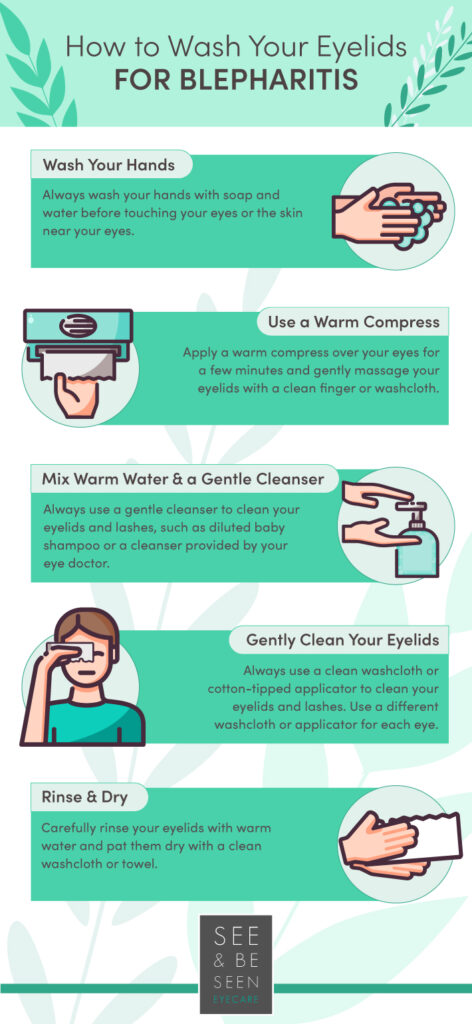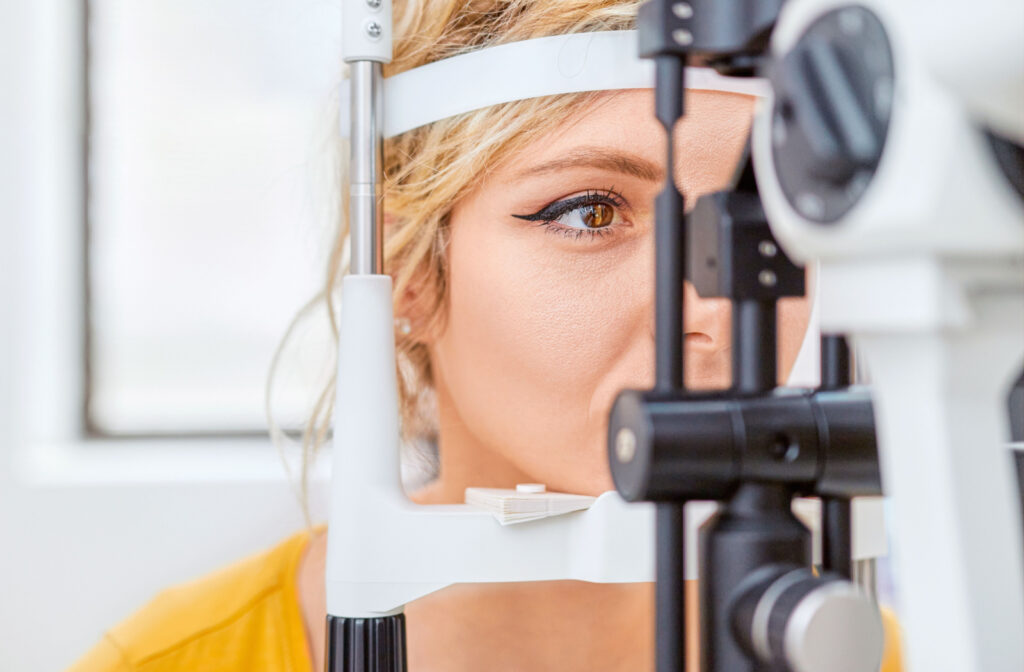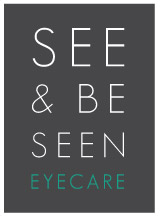Blepharitis is one of many conditions that can cause red eyes—and when it affects you or a member of your family, it’s natural to wonder whether or not it’s contagious.
Fortunately, blepharitis is not contagious. However, that doesn’t mean it can be ignored. Blepharitis can cause lasting irritation, contribute to other conditions like dry eyes, and, in some cases, damage your eyes.
You don’t have to live with discomfort. Whether this is your first experience with blepharitis or you’re familiar with it already, learning more about what to expect and your options for treatment can set you on the course to lasting relief.
How Fast Does Blepharitis Go Away?
Blepharitis rarely goes away completely. It’s often a chronic condition that requires daily management for symptom prevention. Fortunately, there are several habits and treatments that help reduce symptoms and shorten the length of blepharitis flare-ups.
A symptom flare-up could last anywhere from a few days to a few weeks. The time it takes for your symptoms to go away can vary based on the type of blepharitis you’re experiencing, your individual eye health, and the treatments you use. Some treatments require several weeks to take full effect.
What Happens If Blepharitis Isn’t Treated?
Although it’s not typically considered a sight-threatening condition, blepharitis can still cause serious, uncomfortable complications when it’s not treated.
Some of the health conditions associated with untreated blepharitis include:
- Dry eyes: Oil and debris that accumulate because of blepharitis can disrupt your tear film and cause dry eye symptoms.
- Styes: A stye is a painful, red bump that can develop on your eyelid because of a blocked oil gland.
- Chalazia: A chalazion is a painless, hard bump on your eyelid that can develop when a stye caused by a blocked oil gland doesn’t completely go away. Chalazia can make your eyelid swell and turn RED and may be permanent
- Red eyes: Without treatment, blepharitis can cause long-term redness that may make it hard to detect other eye conditions.
- Cornea damage: In some cases, swelling, irritation, or complications related to your eyelashes growing in the wrong direction because of blepharitis can cause damage to your cornea—the clear front part of your eye.
Blepharitis has the potential to cause long-term discomfort related to a wide variety of symptoms as well, from burning sensations and crusty buildup on your eyelids to eyelashes falling out or scars developing on your eyelids.
Seeking support and treatment for blepharitis can help you avoid potential complications and reduce the daily discomfort you or your family member might be experiencing because of blepharitis.
What Is the Best Home Remedy for Blepharitis?
If you’ve never experienced blepharitis before or you’re unsure whether your symptoms are being caused by blepharitis or something else, scheduling an eye exam can be crucial for getting the right type of treatment and support.
However, if you’ve experienced blepharitis before and you’re in need of a home remedy for a flare-up, some of the options you can try include:
- Gently washing your eyes with a washcloth and a gentle cleanser
- Using eyelid wipes to clear away blockages and debris near your eyelids
How Often Should You Wash Your Eyelids for Blepharitis?
Your exact eye care and hygiene routine may vary—and it’s often ideal to speak directly with us about your eye care needs—but in general, you can use the following basic routine for eye hygiene:
- Wash your eyelids 2–4 times each day during flare-ups
- Wash your eyelids 1–2 times each day when your symptoms are under control

What Are the Treatments Available for Blepharitis?
When home remedies fail to bring your symptoms under control—or you need additional support from your eye doctor for a first-time experience with blepharitis—you can visit us to take advantage of our expertise and modern treatments for blepharitis.
There are 2 treatments we often recommend for patients based on their eye health: BlephEx and LipiFlow.
BlephEx treatments involve using a small, handheld sponge to gently scrub and exfoliate your eyelids. Cleaning your eyelids can help remove the debris and biofilm that cause blepharitis.
LipiFlow treatments use gentle heat and pressure to break up blockages in your meibomian glands, the glands in your eye that make oil. Removing clogged oil can help relieve blepharitis and reduce the chances of bad flare-ups.
Clogged meibomian glands and blepharitis also play a role in the development of dry eye disease. If you’re experiencing dry eye symptoms alongside blepharitis, we may recommend other in-office dry eye treatments or at-home dry eye treatments.

When Should You See an Eye Doctor for Blepharitis?
Those experiencing their first blepharitis symptoms should schedule an appointment with their eye doctor. It’s important to correctly diagnose blepharitis and confirm that your symptoms are not being caused by a different eye condition.
If you experience blepharitis flare-ups, you should visit us when your regular eye hygiene routine fails to keep your symptoms controlled. We can recommend adjustments and new strategies for managing blepharitis.
Book an appointment with us today to speak with us about your symptoms—or any other eye health concerns you may have. At See & Be Seen Eyecare, we’re focused on providing exceptional eye care for all your needs.





